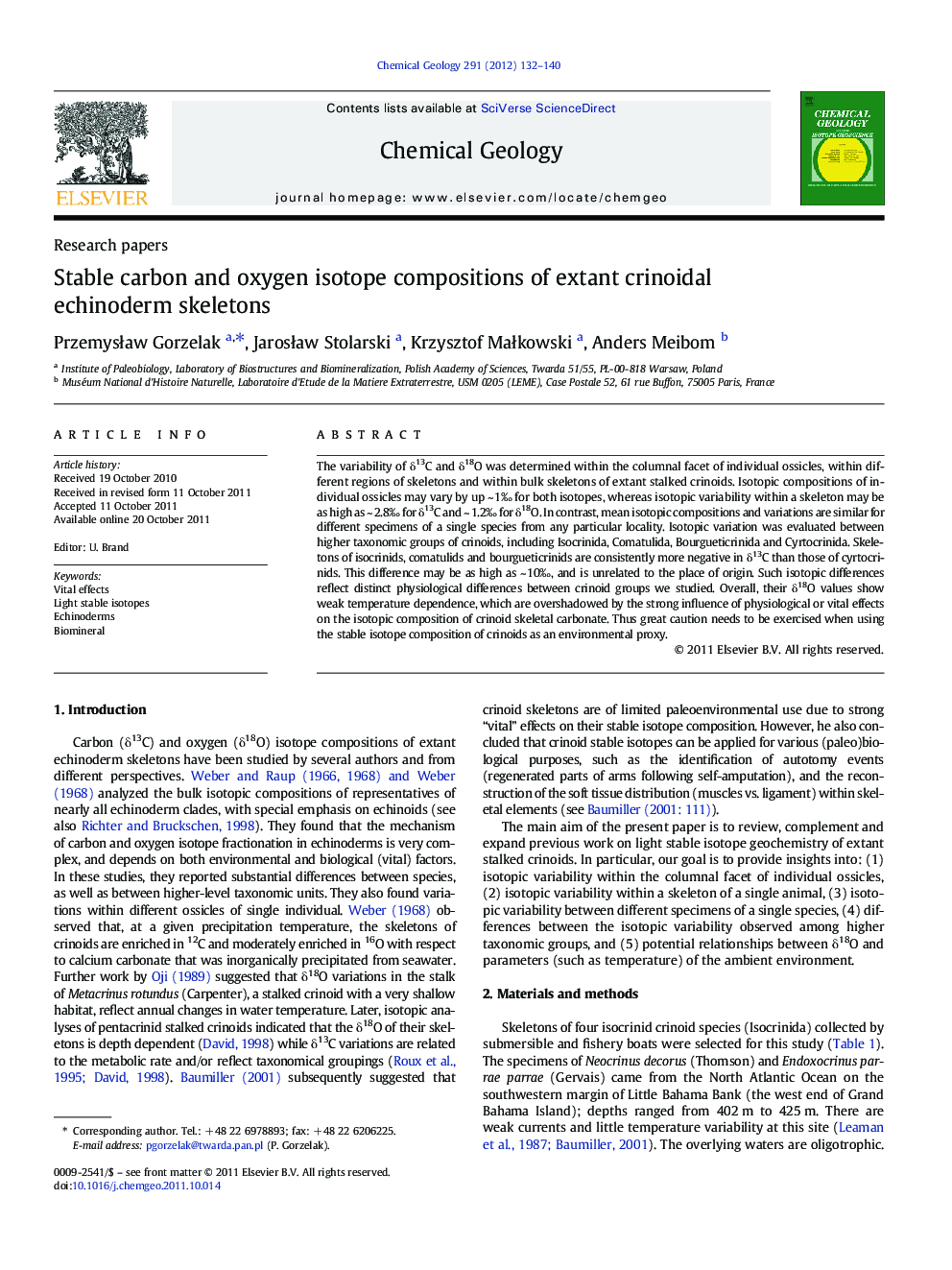| Article ID | Journal | Published Year | Pages | File Type |
|---|---|---|---|---|
| 4699574 | Chemical Geology | 2012 | 9 Pages |
The variability of δ13C and δ18O was determined within the columnal facet of individual ossicles, within different regions of skeletons and within bulk skeletons of extant stalked crinoids. Isotopic compositions of individual ossicles may vary by up ~ 1‰ for both isotopes, whereas isotopic variability within a skeleton may be as high as ~ 2.8‰ for δ13C and ~ 1.2‰ for δ18O. In contrast, mean isotopic compositions and variations are similar for different specimens of a single species from any particular locality. Isotopic variation was evaluated between higher taxonomic groups of crinoids, including Isocrinida, Comatulida, Bourgueticrinida and Cyrtocrinida. Skeletons of isocrinids, comatulids and bourgueticrinids are consistently more negative in δ13C than those of cyrtocrinids. This difference may be as high as ~ 10‰, and is unrelated to the place of origin. Such isotopic differences reflect distinct physiological differences between crinoid groups we studied. Overall, their δ18O values show weak temperature dependence, which are overshadowed by the strong influence of physiological or vital effects on the isotopic composition of crinoid skeletal carbonate. Thus great caution needs to be exercised when using the stable isotope composition of crinoids as an environmental proxy.
► Crinoids exhibit a large vital effect in the fractionation of light stable isotopes. ► Large differences in isotope composition exist at higher taxonomic levels in crinoids. ► Great care should be taken in the use of crinoid skeletons as environmental proxies.
